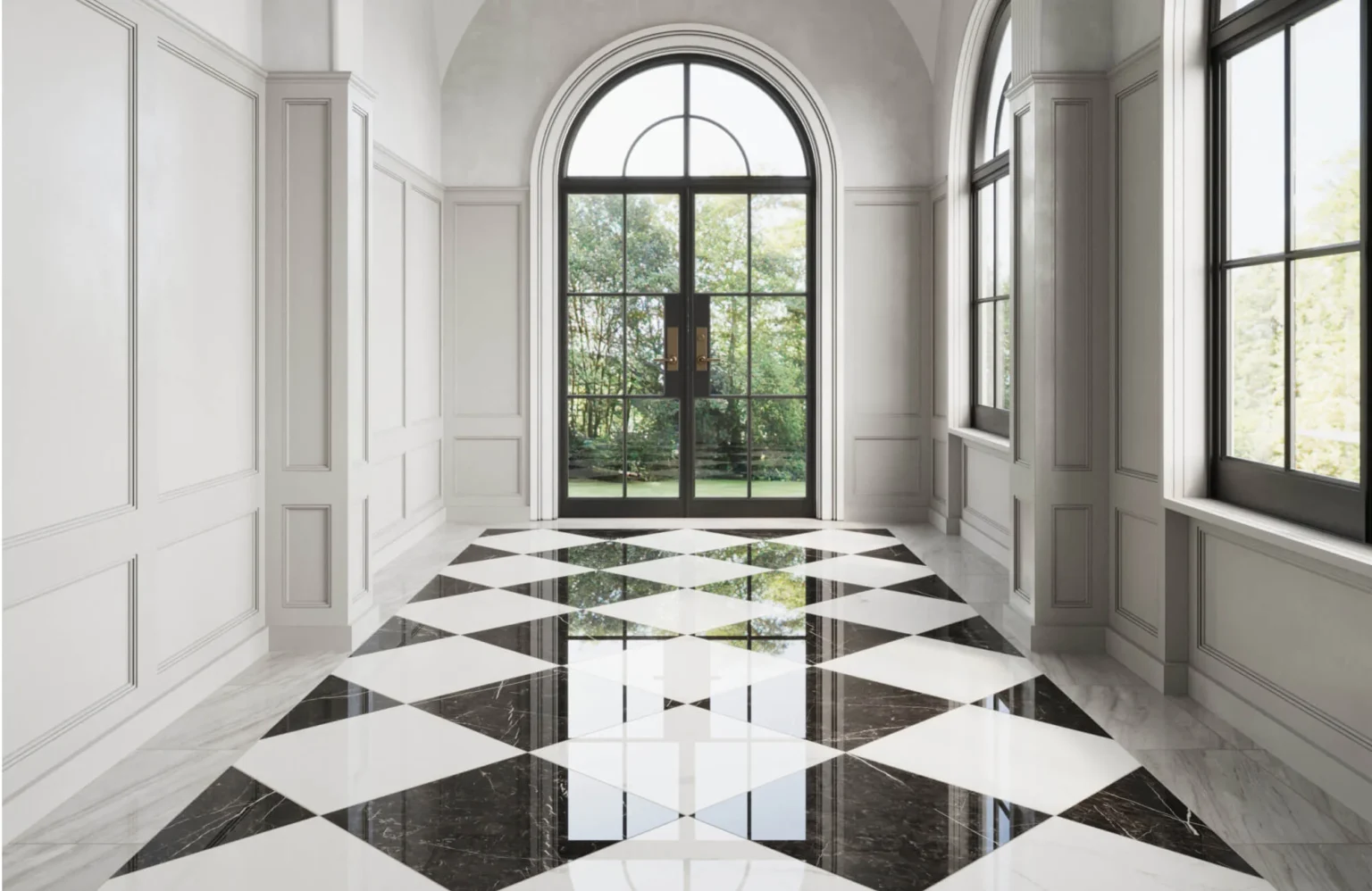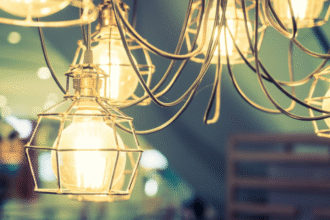Introduction to Checker Board Black and White Floor
Step into a world where classic elegance meets modern flair—a checker board black and white floor transforms any space into something extraordinary. This timeless design has graced the floors of grand ballrooms, chic cafes, and stylish homes for centuries. With its bold contrast and geometric precision, a checkerboard pattern adds depth and character to your interiors.
Whether you’re revamping your kitchen or looking to add sophistication to your hallway, this flooring option is not just visually striking but also versatile enough to fit various styles. Ready to explore the many facets of this iconic look? Let’s dive in!
The History of Checker Board Black and White Floor
The checker board black and white floor has a rich history rooted in both functionality and aesthetics. Its origins can be traced back to ancient civilizations, where simple patterns were used for practical purposes.
During the Renaissance, this bold design found its way into grand palaces and cathedrals across Europe. The striking contrast of black and white tiles became synonymous with elegance.
In the 19th century, checkerboard flooring gained popularity in Victorian homes. It was favored for its ability to enhance light within dimly lit spaces while adding visual interest.
As time progressed, this classic pattern transitioned into modern design. Today, it’s embraced not only in traditional settings but also in contemporary interiors that seek a timeless appeal.
The allure of the checker board black and white floor lies in its versatility; it effortlessly complements various styles from rustic charm to sleek minimalism.
How to Achieve the Iconic Black and White Look
Achieving that classic checker board black and white floor is simpler than you might think. Start by selecting your space. Popular choices include kitchens, entryways, and dining areas.
Next comes the layout. Decide on the size of your squares—typically 12×12 inches or 24×24 inches work well. Use a chalk line to mark where each tile will go for precise placement.
When it’s time to choose materials, ceramic tiles are durable and easy to clean. Vinyl options offer flexibility in design at a lower cost.
Don’t forget about grout! A contrasting color can enhance the visual impact of your black and white pattern. Once you’ve laid down those tiles with adhesive, let them set before grouting for a flawless finish.
Add baseboards or trim to complete the look seamlessly—this will frame your floor beautifully and give it that polished appearance everyone loves.
Materials Needed for Installing a Checkerboard Floor
To install a checker board black and white floor, you’ll need several essential materials. Start with the flooring tiles themselves. Choose between vinyl, ceramic, or laminate for your desired look and durability.
Next, gather adhesive or mortar suitable for your tile type. This will ensure a strong bond to the subfloor beneath.
You’ll also want a measuring tape for precision when laying out your design. A chalk line tool helps mark straight lines that guide placement.
Don’t forget spacers! These little tools keep your tiles evenly spaced apart during installation.
For cutting tiles to fit around edges or obstacles, have a tile cutter on hand—manual or electric works well depending on the complexity of your project.
Finish off with grout if using porous tiles; it fills gaps and enhances aesthetics while providing stability to the layout. Gather these materials before starting for a smoother installation process.
Pros and Cons of Checkerboard Floors
Checkerboard floors offer a striking aesthetic. Their bold black and white pattern can transform any space into a stylish haven. This classic design pairs well with various décor styles, from retro to modern.
However, they do come with some drawbacks. The high contrast can show dirt and stains more easily than solid colors. Regular cleaning is essential to maintain their appearance.
Installation may also pose challenges for DIY enthusiasts. Aligning the tiles perfectly requires precision and patience. Inexperienced hands might find themselves frustrated with uneven patterns.
On the positive side, checkerboard flooring is versatile. It works wonders in kitchens, bathrooms, or even entryways. The design adds character without overwhelming other elements in the room.
Another benefit is durability; many materials used for this style are long-lasting and resilient against wear over time. Balancing these pros and cons is key when deciding if a checkerboard floor suits your lifestyle and taste preferences.
Maintaining Your Checkerboard Floor
Maintaining your checker board black and white floor is essential for keeping it looking fresh and vibrant. Regular sweeping or vacuuming will help remove dirt and debris that can scratch the surface over time.
For deeper cleaning, use a damp mop with a mild detergent. Avoid harsh chemicals; they can dull the finish. Stick to pH-neutral cleaners to preserve that striking contrast between the tiles.
Be mindful of spills—wipe them up quickly to prevent stains, especially on porous materials like tile or vinyl.
Consider placing mats at entrances to reduce wear from foot traffic. This simple step can extend the life of your flooring significantly.
Periodic resealing may be necessary depending on your material choice. This protects against moisture damage while enhancing shine—a small effort for enduring beauty in your space.
Creative Ways to Use Checkerboard Flooring in Different Spaces
Checkerboard flooring can transform a space with its bold pattern and timeless appeal. In kitchens, it adds a retro vibe while complementing modern appliances beautifully.
Living rooms benefit from this design too, creating striking visuals underfoot that draw the eye. Pair it with neutral furnishings to let the floor shine.
Consider using checkerboard tiles in entryways for an inviting first impression. The contrasting colors can set the mood right as guests enter your home.
In bathrooms, alternating black and white patterns create a chic atmosphere. It’s both practical and stylish—perfect for small spaces.
For outdoor patios, weather-resistant versions of checkerboard tiles bring flair without compromising durability. Add some colorful cushions to enhance the lively feel.
Each application highlights versatility while infusing personality into various environments effortlessly. Embrace creativity by mixing sizes or textures within the classic design for added dimension throughout your home!
Conclusion
Checker board black and white floors bring a timeless elegance to any space. Their striking contrast can transform a room, making it feel more dynamic and stylish.
Whether you’re drawn to the nostalgia of retro design or the sophistication of modern aesthetics, this flooring choice suits various tastes. It’s versatile enough for kitchens, living rooms, or even entryways.
With proper maintenance, these floors can last for years while still looking fresh. They invite creativity in interior design with endless patterns and layouts.
As you explore checkerboard options, consider personalizing your approach. Play with different materials or sizes for unique effects that reflect your style. The charm lies in its ability to adapt while retaining its iconic allure.
Embrace the boldness of this classic floor design and let it inspire new ideas throughout your home!
FAQs
Q: What is a checker board black and white floor?
A: A checker board black and white floor features a pattern of alternating black and white squares. This classic design adds visual interest and can be found in various spaces, from kitchens to entryways.
Q: Can I install a checkerboard floor myself?
A: Yes, if you’re handy with tools and have some experience in flooring installation, you can tackle this project yourself. However, for those less experienced or working with intricate materials like tile, hiring a professional might be wise.
Q: Is the checkerboard pattern suitable for small rooms?
A: Absolutely! A checkerboard black and white floor can create an illusion of depth. The contrasting colors often draw the eye around the space, making it feel larger than it actually is.
Q: How do I clean my checkerboard flooring?
A: Regular sweeping or vacuuming will help keep dust at bay. For deeper cleaning, use a damp mop with mild detergent designed for your specific flooring material to maintain its shine without damaging it.
Q: Are there modern variations of the traditional look?
A: Yes! Designers have experimented with colors beyond just black and white. You may find vibrant hues or even textures that give new life to this timeless pattern while retaining its essence.
Q: What rooms are best suited for a checkerboard floor?
A: While traditionally seen in kitchens or dining areas, these floors work well in hallways, bathrooms, or even living rooms. They add flair wherever they’re placed!
Checker board black and white floors continue to captivate homeowners everywhere. Whether you embrace tradition or experiment creatively with color combinations—this style remains irresistibly chic.

















